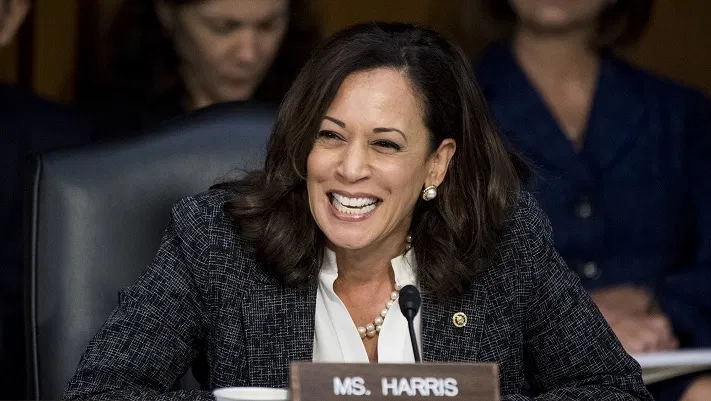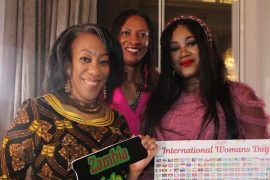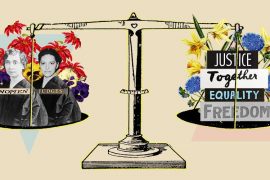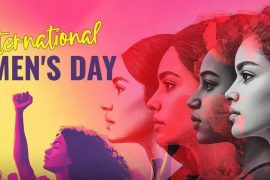By Kembet Bolton
Is Kamala Harris the best fit?
Amy Klobuchar, Kamala Harris, Elizabeth Warren! These names all topped the list for speculations of who will be the presumptive Democratic presidential nominee, Joe Biden’s running mate.
on August 11, 2020, the list was narrowed down as Kamala Harris was announced as Joe Biden’s running mate for the 2020 United States presidential election, becoming the third female U.S. vice presidential nominee of a major party, after Geraldine Ferraro and Sarah Palin.
Not surprisingly, the media have been avid with various reactions following Biden’s pick.
Firstly, the matter of Harris’s origin became very controversial.
Kamala Harris is the daughter of an Indian-born mother and Jamaican-born father. Though Harris lived a proudly African American life, she grew up embracing her Indian culture according to the Washington Post.
Harris s public image has however been more tied to her identity as an African-American politician, especially recently during the current conversation around race and the Black Lives Matter movement in the U.S. The community also view Harry as one of their own, her candidacy suggesting a potential wider recognition of the Indian and South Asian communities in the country.
People have questioned why most stories, about Harris, referred to her as a “black woman.” Arguing that the ethnic label denies part of who she is.
Is any kind of ethnic labelling needed in the first place?
Racial and ethnic labelling through a journalistic tradition is often a recipe for controversy. Does this suggest then that ethnic labelling is unnecessary? Not at all. Ethnic labelling makes for diversity which is a part of California history, Kamala’s state of origin.
The Golden State of California, discovered by James Marshall in 1848, has a rich, and racially and ethnically contentious history.
Its population — and that of the region surrounding it — became more “multicultural” in a matter of months, but power resided with white men who took charge of the major public and private institutions.
The population of California and that of the region surrounding it — became more “multicultural” in a matter of months, but power resided with white men who took charge of the major public and private institutions. (Native Americans and Spaniards were numerous before the Gold Rush.)
With that kind of racial and ethnic diversity and with many political, social, and cultural issues related to race and ethnicity still largely unresolved, it is no surprise that the local press makes it a habit of identifying a newly elected public official like Kamala Harris by ethnicity. But why is she mostly “a black woman” to some Bay Area reporters and editors? Why don’t most press stories, when they choose to label her ethnically, tell the whole truth?
We will need to ponder over this.
The Issue of Gender-Based Selection
Joe Biden is the first major-party presidential candidate to announce that he is committed to a female running mate. He is the first candidate who has limited his choice of running mates to only women.
There are a number of women who are qualified to be president tomorrow, I would pick a woman to be my vice-president,” Biden had declared during the March democratic debate.
Biden’s position on choosing a woman as a vice presidential candidate has also been followed with a lot of controversies and differing opinions.
For some, selecting from a female-only pool sends the message that women couldn’t earn this position on their own, without some help. They argue that the long-lasting issue of qualification versus gender-based selection comes to play here, where women were given roles not because they are the best fit but because they are the most qualified “female” for the position.
Women have, over the years, fought hard to have gender removed from hiring decisions and gender discrimination in hiring was barred by Title VII of the Civil Rights Act. One of the National Organization for Women’s (NOW) first actions in the 1960s was getting gender-segregated help-wanted ads removed from the New York Times. At that time, jobs listed in the male column were often high-paid leadership or trade positions, while low-level office jobs dominated the female section. Ads targeting women offered less pay and often specified the need for applicants to be “attractive” and “well-groomed.” The Equal Employment Opportunity Commission (EEOC) finally ruled that separate male and female help wanted ads violated the Civil Rights Act. A big victory for women’s rights, the New York Times stopped printing separate ads for men and women on December 1, 1967.
It’s fifty-three years down the line, and while it’s legal for Joe Biden to choose his running mate based on gender, the majority of people say it doesn’t feel right.
Ultimately, Biden is trying to be a good male ally to women. After all, a female vice-president would be a great role model for young girls, provide the female perspective and potentially help change long-held stereotypes about what leaders look like. And, if, as rumoured, Biden only serves one term if he wins, that could set up his vice-president as the front-runner for 2024. It’s a critical role, so let’s just be sure we all realize that his candidate pick is likely both the best woman and the best person for the job.





Comments are closed.